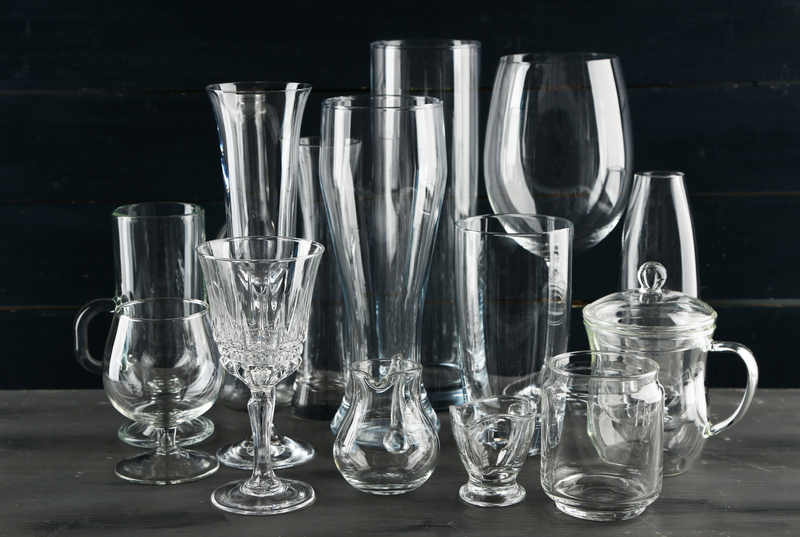A Step-by-Step Guide to Storing Your Freezer Safely
Proper freezer storage is essential to maintain the quality, taste, and safety of your food. Whether you are freezing last night's leftovers or prepping meals for the week ahead, knowing how to store your freezer items safely can save you time, money, and prevent foodborne illnesses. This comprehensive guide is designed to walk you through every aspect of safe freezer storage, from organizing your freezer to best practices for packaging food. Let's dive in!
Why Safe Freezer Storage Matters
Proper storage techniques are not just about maximizing space--they're critical for food safety. When foods are not stored correctly, they can become compromised, leading to spoilage or bacterial growth even in icy conditions. With the right approach, you can ensure that your meals stay fresh, safe, and delicious for months to come.

Understanding Freezer Basics
- Freezer Temperature: Set your freezer to 0?F (-18?C) or lower to ensure optimal food safety.
- Airflow: Avoid overpacking to allow proper air circulation, which ensures even freezing.
- Storage Duration: While freezing keeps food safe indefinitely, quality deteriorates over time. Each food type has its recommended maximum storage time.
Step 1: Preparing Your Freezer
Defrost and Clean
Before you start loading food, clean your freezer thoroughly. Unplug the appliance, remove any old items, and clean all shelves with a mild detergent. This removes any built-up ice, odors, and potential bacteria.
Check Freezer Temperature
Use a freezer thermometer to ensure your appliance consistently maintains a temperature at or below 0?F (-18?C). Temperature fluctuations can decrease food quality and safety.
Organize Your Freezer Space
- Group similar items together (meats, vegetables, fruits, prepared meals) to locate them easily and reduce the time the freezer door remains open.
- Allow space for air circulation by not stacking packages too tightly.
- Consider using bins or shelves to keep your freezer tidy and accessible.
Step 2: Choosing the Right Packaging
One key to safe freezer storage is using proper packaging materials. Freezer burn, caused by air exposure, leads to dry, leathery, and flavorless food. The solution is effective packaging!
Recommended Packaging Materials
- Vacuum-sealed bags or containers: Removes air and offers top-notch protection against freezer burn.
- Freezer-grade resealable plastic bags: Thicker than regular plastic bags for added protection.
- Rigid plastic containers or glass jars (leave headspace for expansion): Reusable and effective for soups and stews.
- Aluminum foil: Great for wrapping meats and baked goods, but should be double-wrapped or placed inside bags for longer storage.
- Freezer paper: Perfect for wrapping cuts of meat or fish.
What to Avoid
- Thin plastics or standard sandwich bags--they offer little protection against freezer burn.
- Poorly sealed containers or bags, which can leak or let in unwanted air.
- Containers that aren't freezer-safe, as they can crack or shatter in extreme cold.
Packing Tips for Safety and Freshness
- Cool food first: Never put hot food directly into the freezer; let it cool to room temperature to avoid raising the freezer's internal temperature.
- Remove as much air as possible: Squeeze air out of bags or use a vacuum sealer to minimize air exposure.
- Label and date every package. This ensures you use the oldest items first and keep track of storage duration.
Step 3: Storing Different Types of Food Safely
Storing Meat and Poultry
- Wrap meats tightly in plastic wrap or freezer paper, then over-wrap in foil or place in airtight freezer bags.
- Divide large packages into meal-sized portions; this prevents thawing and refreezing, which lowers quality and safety.
- Store meats on the lowest shelf or bottom bin to avoid cross-contamination in case of leaks.
- Label with the cut, weight, and date.
Freezing Vegetables
- Blanch before freezing: Briefly boiling and then shocking in ice water preserves color, texture, and nutrients.
- Spread vegetables on a tray to freeze individually, then transfer to freezer bags. This makes it easy to grab just what you need.
- Remove excess air and label with date and variety.
Fruit Storage in the Freezer
- Wash and dry fruit before freezing.
- For berries, freeze on a baking sheet before transferring to bags (this prevents clumping).
- Add a little sugar or syrup to delicate fruits to preserve flavor and texture.
Prepared Meals and Leftovers
- Divide into single-serve or family-sized portions.
- Cool completely before freezing to avoid condensation and ice crystals.
- Use airtight containers or bags; remove as much air as possible.
- Label with contents and date. For soups, stews, and casseroles, list all included ingredients for easy meal planning.
Dairy and Bread
- Bread: Freeze in slices or whole loaves, wrapped tightly in plastic and a layer of foil for best results.
- Cheese: Hard cheeses freeze well; soft cheeses may change in texture. Grate or slice cheese before freezing for easier use.
- Milk: Freeze in small containers (allow room for expansion). Thaw in the refrigerator before use and shake well.
Step 4: Labeling and Organizing Your Freezer
Why Labeling Matters
A well-organized freezer makes it quicker to find what you need and reduces waste. Always use waterproof labels or markers to note:
- Name of the food item
- Date of freezing
- Portion size or weight
- Special instructions (e.g., needs to be cooked thoroughly)
Freezer Organization Methods
- Use bins or baskets for different categories (meats, vegetables, ready meals, bread).
- Implement FIFO (First In, First Out) system: Store newer items behind older ones to use up food in the order it was frozen.
- Rotate stock regularly--check monthly for older packages to use first.
- Inventory Sheet: Keep a list of freezer contents and dates taped to the door for quick reference.
Step 5: Monitoring and Maintaining Freezer Safety
Regular Checks
- Check that the freezer door seals tightly and the temperature stays consistent.
- Spot check for signs of spoilage or freezer burn.
- Purge items that are past their safe storage time according to food safety guidelines.
What to Do During a Power Outage
- Keep the freezer door closed. A full freezer will stay at a safe temperature for about 48 hours; a half-full one for about 24 hours.
- Use a thermometer to check if the food is still below 40?F (4?C) if power is out for over a day. When in doubt, throw it out.
Bonus Tips for Maximum Freezer Efficiency
- Place newer items at the bottom or back, and older items at the top or front for easy access.
- Freeze flat! Place soups, sauces, and cooked grains in zip-top bags and freeze flat to stack easily and save space.
- If you buy in bulk, separate large packages into smaller portions before freezing to avoid thawing more than needed at one time.
- Don't refreeze foods that have already been thawed, as this can compromise texture and safety.
- Keep an extra ice pack or two in your freezer to help maintain temperature in case of a power outage.
Common Freezer Storage Mistakes to Avoid
- Overloading the Freezer: Overpacking hinders air flow and reduces freezing efficiency.
- Neglecting to Label: It's easy to forget when something went in or what it is after weeks or months.
- Using Wrong Containers: Glass jars that aren't freezer-safe can crack. Thin plastics will let in air and cause freezer burn.
- Not Blanching Vegetables: Skipping the blanching step may result in mushy or off-colored veggies.
- Freezing Hot Foods: Always let items cool before putting them in your freezer to prevent temperature fluctuations.

Frequently Asked Questions About Safe Freezer Storage
How long can food stay in the freezer and stay safe?
*Technically*, frozen foods remain safe indefinitely if kept at 0?F (-18?C) or lower. However, the quality and taste can decline over time. For best taste and texture, use meats within 6-12 months, fruits and veggies within 8-12 months, and prepared meals within 2-3 months.
Can all foods be frozen safely?
Most foods freeze well, but some, like lettuce, cucumbers, or certain dairy products (like sour cream), don't retain their original textures post-thaw. Check a food freezing chart for guidance.
What is freezer burn and is it safe?
Freezer burn appears as whitish, dry patches on food. It's not harmful to eat but can result in off flavors and poor texture. Prevent it by using airtight packaging and removing as much air as possible.
Conclusion: Store Your Freezer with Confidence
With safe freezer storage methods, you can rest assured your food will remain fresh, delicious, and safe to eat whenever you need it. Proper organization, packaging, labeling, and monitoring are key to mastering freezer management. By following this step-by-step freezer storage guide, you'll enjoy less waste, better tasting food, and peace of mind every time you open your freezer door.
- Keep your freezer at the right temperature.
- Use the correct packaging and portion sizes.
- Label everything for easy tracking.
- Organize foods for efficiency and safety.
- Monitor and clean your freezer regularly.
With these tips, storing your freezer safely becomes a breeze. Start today, and enjoy the benefits of safe, organized, and long-lasting freezer storage!



